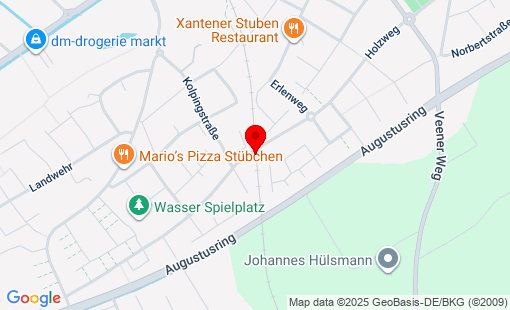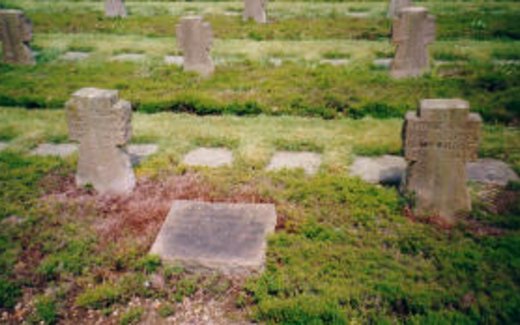Xanten war cemetery
Here rest 298 dead of the Second World War, including 18 foreign workers (1 Dane,
Russians and Poles): Soldiers and civilian citizens; men, women and children who
Victims of war or tyranny.
A first burial ground was created during the war directly next to the mortuary in the
the municipal cemetery. Members of the armed forces as well as citizens of the town
buried their dead there. On November 20, 1942, 43 people, including two women
two women, died in an accident in workhouse 4 of the Luftwaffe ammunition plant
2/ VI in Xanten. A memorial service for these victims took place on 25.11.1942
took place. 23 of them, including one of the women, are buried at the war cemetery
in Xanten, the others were transferred to their home town. A
Memorial stone for these dead is located in the Hees on the former
Site of the ammunition plant. 35 soldiers were killed in another explosion at the
Hees air force ammunition depot on October 6, 1944. The dead were
buried in three collective graves.
Many of the soldiers, civilians and foreign citizens buried in the cemetery are victims of the explosion
And foreign citizens resting in the cemetery were victims of the heavy bombing raids on February 13, 1945
10. and February 13, 1945. The bombing on February 10 also killed the
Xanten cathedral master builder Johann Schüller also lost his life (grave no. 138). Entire families
were wiped out in the bombing raids. For example, the attack on 13.
February alone, 10 members of the Merissen family (grave no. 99 - 104), including
3-year-old Karl Josef.
On February 21, a bright spring day, Xanten Cathedral sank into ruins.
"The roof has been swept away, the vaults have collapsed, the north tower is a stump, the
Walls crumbled, the cloister crumbled: a sight of horror", we read in a chronicle
we read in a chronicle. In March 1945, Xanten lay in rubble and ashes. A
Bombing raid on February 25 caused further victims and destruction.
For the population returning home from the evacuation in April, the first task was to
to ensure their daily survival. The commitment of Walter
Bader, the later state curator, who was able to mobilize many men and women from Xanten
and men for the reconstruction of the cathedral. Their energy and
donations and financial support from the federal and state governments made it possible to
the reconstruction of the historic Xanten Cathedral. in 1957, the
Redesign of the war cemetery in Xanten began in 1957. The German War Graves Commission
War Graves Commission assisted the town and commissioned garden architect
Garden architect Willi Tapp, Düsseldorf, with this task.
The mortuary next to the war cemetery was demolished and a new one erected at a different location
erected elsewhere. From the end of January to mid-March 1960, 129 graves were
Graves were opened for the purpose of identifying and reburying the dead within the site
the site. The work was difficult because the dead at the time - especially
the last days of the war - could often only be buried in a hurry.
If a subsequent identification was possible, the dead were given an individual grave,
unidentified bodies remained in collective graves. The individual graves were given
Grave crosses made of Ruhr sandstone. Some of the crosses do not bear the dates of the deceased,
as there was not enough space for them. Therefore, between these
Crosses with the names of the buried. But not in all cases
the exact location of the dead can be given.
Today's central point of the war cemetery is the high cross with a small memorial square
with a small memorial square. To the left of the cross, the names of the fallen
of the fallen of the town of Xanten from both world wars. Further to the left
of the high cross, somewhat set back along a path, is the site with the graves of the foreign
Graves of the foreign workers, some of whom were arbitrarily killed.
The inscription on the memorial stone, which the town erected in 1996, commemorates their fate
their fate.
The war cemetery was opened on November 19, 1961 (National Day of Mourning) by
Kurt Baurichter, Düsseldorf, and placed in the care of the town of Xanten
of the town of Xanten.
Another war cemetery is located in the cemetery of the
Franciscan monastery in Xanten-Mörmter. The war dead buried at the
Gamerschlagshof during the war were moved to the war cemetery at
War cemetery in Kamp-Lintfort in the 1950s.
Germany
Xanten-Gemeindefriedhof
Total Occupation: 295 fatalities
Total Occupation: 295 fatalities
Contact

